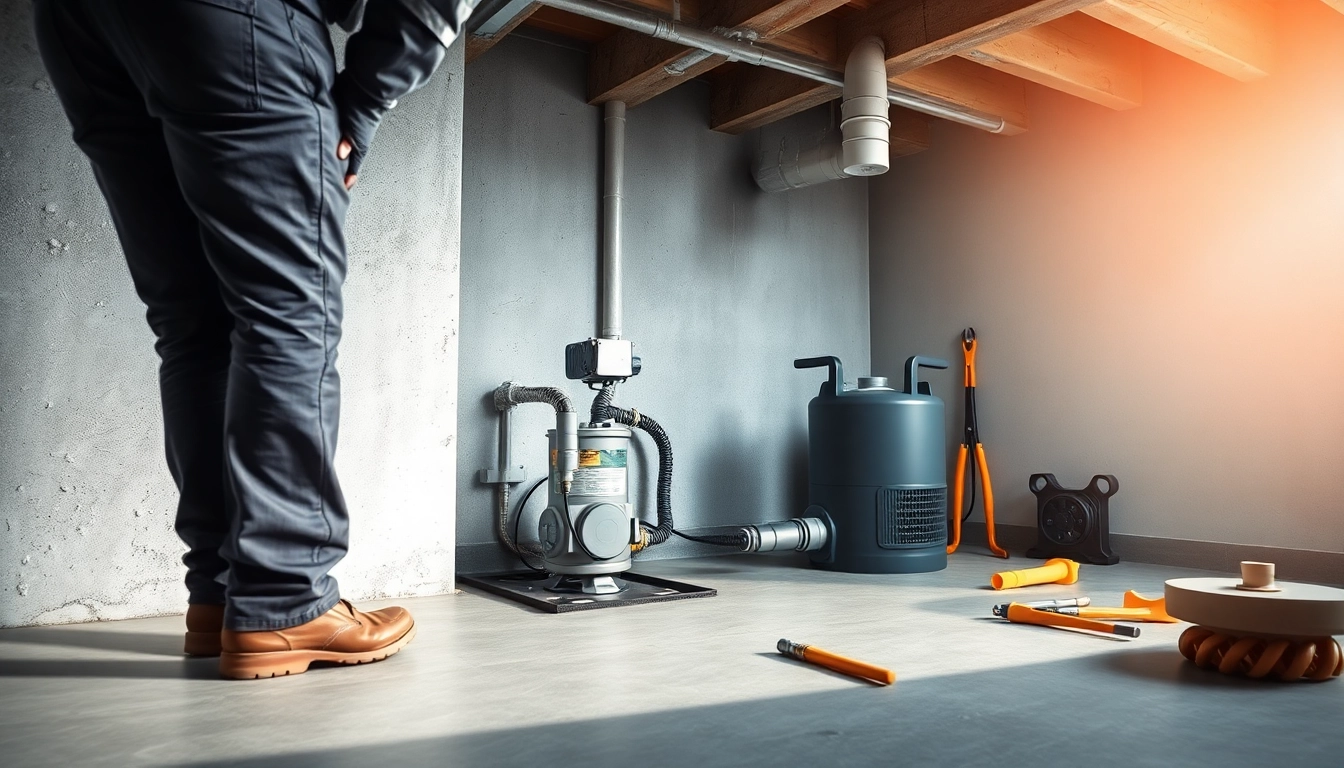Understanding Sump Pump Installation Necessities
What Is a Sump Pump?
A sump pump is a device designed to remove excess water that accumulates in a sump basin, typically located in the basement of a home. Its primary function is to prevent flooding and protect the structural integrity of the building. The pump automatically activates when water levels rise to a certain point, directing the water away from the foundation and into a drainage system or outside of the home.
Why Sump Pump Installation Is Important
Proper sump pump installation is critical for maintaining a dry basement and preventing potential water damage. During heavy rainfall or snowmelt, basement flooding can lead to significant property damage, mold growth, and structural issues. By installing a sump pump, homeowners can mitigate these risks and ensure a safe and dry living environment. Additionally, a functional sump pump can enhance the value of a home, making it more appealing to potential buyers who are concerned about water damage risks.
Common Considerations When Installing a Sump Pump
- Location: The sump pump should be installed in the lowest part of the basement, ideally where water tends to accumulate.
- Power Supply: Ensure that the pump is located near a power source, and consider installing a backup battery for power outages.
- Drainage System: Plan for an effective drainage system to lead water away from the foundation of your home.
- Pump Size: Consider the capacity of the pump you need based on potential water flow and the size of the sump basin.
Step-by-Step Guide to Proper Sump Pump Installation
Preparing Your Basement for Sump Pump Installation
Before installation, it’s essential to prepare the basement appropriately. Start by assessing the area where the sump pump will be installed. You may need to clear debris, remove old materials, or even level the area to ensure a stable and secure installation.
Tools Needed for Sump Pump Installation
Gathering the right tools will facilitate a smoother installation process. Common tools include:
- Shovel and spade
- Drill with masonry bits
- Pipe cutter
- Level
- Wrench and pliers
- Safety goggles and gloves
Instructions for Executing a Successful Installation
- Dig the Sump Basin: Excavate a hole about two feet deep and wide enough to accommodate the sump basin.
- Place the Sump Basin: Position the basin properly in the hole, ensuring it is level and secure.
- Install the Pump: Place the sump pump into the basin according to the manufacturer’s instructions, ensuring that the discharge pipe is connected securely.
- Set Up the Discharge Line: Route the discharge line away from the foundation to prevent water from flowing back into the basement.
- Attach the Float Switch: Install the float switch that will allow the pump to activate at the correct water level.
- Test the System: Fill the basin with water to test the pump’s functionality. Ensure it activates and discharges water correctly.
Choosing the Right Sump Pump for Your Needs
Types of Sump Pumps: Pedestal vs. Submersible
There are two main types of sump pumps: pedestal and submersible. Pedestal pumps are positioned above the sump basin, with a motor mounted on a vertical shaft. This type tends to be more accessible for maintenance but might be noisier. Submersible pumps, on the other hand, sit within the sump basin, making them quieter and less obtrusive. They are typically more efficient and compact but can be more challenging to service.
Assessing Your Home’s Water Needs
Understanding your home’s specific water drainage needs is crucial for selecting the right sump pump. Factors such as the history of flooding, soil type, and elevation can all play a role in determining the pump size and type. A reputable contractor can help assess these factors to recommend an appropriate solution.
Energy Efficiency and Cost Considerations
When choosing a sump pump, consider energy efficiency and operating costs. Look for models with high-efficiency ratings to minimize long-term energy consumption. Although investing in a higher-quality pump may have a higher upfront cost, it can save money through reduced energy bills and fewer repairs in the long run.
Maintenance Tips for Your Sump Pump System
Routine Checks and Procedures
To ensure your sump pump operates effectively, regular maintenance checks are essential. Here are a few routine procedures:
- Test the pump monthly by pouring water into the sump basin.
- Inspect the discharge pipe for blockages or leaks.
- Clean the sump basin to remove debris and sludge buildup.
- Check the power cord and plug for damage.
Signs Your Sump Pump Needs Attention
Keep an eye out for signs indicating your sump pump may be malfunctioning. These signs include:
- The pump runs continuously or doesn’t activate.
- Strange noises are coming from the pump.
- Visible rust or corrosion on the pump.
- Water accumulation in the basement despite having the sump pump installed.
How to Troubleshoot Common Sump Pump Issues
If your sump pump is not functioning correctly, consider the following troubleshooting steps:
- Check the Power Source: Ensure the pump is plugged in and that the circuit breaker has not tripped.
- Inspect the Float Switch: Make sure the float switch moves freely and is not obstructed by debris.
- Examine the Discharge Pipe: Look for clogs or kinks in the discharge line that could impede water flow.
- Consult the Manual: Reference the manufacturer’s manual for specific troubleshooting guidelines.
Sump Pump Installation Myths Debunked
Myth vs. Reality: DIY Installation Risks
Many homeowners believe that installing a sump pump is an easy DIY project. However, improper installation can lead to significant problems, such as inadequate water drainage or system malfunctions. It’s essential to understand the complexities of your home’s water management system and consider professional assistance to ensure a correct installation.
Understanding Local Codes and Regulations
Local building codes and regulations regarding sump pump installations vary, and it’s crucial to familiarize yourself with these requirements. Failure to comply may result in fines or require costly rework. Check with your local building department to ensure your installation adheres to the necessary guidelines.
Expert Opinions on Professional Installation Services
Many experts advocate for professional sump pump installation due to the technical nature of the task. Experienced contractors can provide invaluable insights and ensure your pump is installed correctly and takes into account the unique aspects of your home. By choosing to hire a professional, you can avoid costly mistakes and ensure the longevity of your sump pump system.


